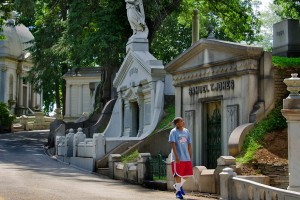Can the Flower Show be to Philly what Fashion Week is to New York?
Public planning requires the ability to think on a big, bold scale. It also requires the savvy to push plans through to completion — to woo backers, find funding, assemble volunteers, and manage not to alienate communities and neighborhoods that have their own aesthetic sensibilities. In short, it’s as much about being a politician as being gardener-in-chief. In New York City, the Restoration Project brought in much-admired John Lauren, of Tiffany & Co., to sit down with the 14th Street block club for a consult on its garden. “He’s designed jewelry for the richest people in the world,” Becher recalls, “and someone from the block club says, ‘I don’t like that!’” No problem — the plans were changed. Similarly, the point of Philly’s new Plant One Million Trees initiative is as much the symbolism as the greenery. Such projects, Becher says, “really resonate with corporate and private funders.”
And with the city strapped for cash, Becher’s big plans are going to require backers of every sort. In New York, he grew the Restoration Project’s budget from $5 million to $13.2 million; PHS’s annual budget is $21 million a year, $1 million of it raised via the Flower Show. (PHS won’t say what Becher is being paid, but in New York he made just shy of $200,000 annually.) In September, PHS announced that Fairmount Park Conservancy executive director Kate Wilhelm was joining PHS as senior vice president of business development. In horticultural circles, that’s like acquiring Cliff Lee. In the depths of the recession, Wilhelm raised $8.1 million to restore the South Garden and Cliffside Paths at the Water Works.
Pots of petunias — even really eye-popping- petunias — may seem petty in a city where thousands of people are jobless and homeless and hopeless. What Becher understands intuitively — what accounts for his thin aesthetic skin — is the symbiotic link between appearance and reality. When a neighborhood looks like hell, it is hell. That makes petunias a damned good start. One of PHS’s most visible branches is Philadelphia Green, a nonprofit that contracts with the city to transform pockets of vacant land that have become trash dumps into “clean and green” spaces — not gardens, necessarily, but neatly fenced-in areas planted with lawns and trees. Philadelphia Green works near schools — so kids can see the improvements — and business districts in need of redevelopment. “Cleaning up a neighborhood makes a difference,” Becher says, pointing to three — Kensington, Northern Liberties and an area near Temple — that have profited from small-scale cleaning and greening: “They’re what’s hot. They’re the neighborhoods of choice now.” Good gardening is good governing.
IN NEW YORK, one Becher-backed park — the Curtis “50 Cent” Jackson Community Garden in Queens — has as its centerpiece half a dozen 10-foot-tall rainwater collectors shaped like martini glasses. This is not your grandma’s community garden. And yet Becher’s first gardening memories are of his grandparents’ house, in Kettering, Ohio. “They’d moved there from their farm,” he explains. “My grandmother let my brother and me play with our Tonka trucks in her garden.” Grandma was a bit of a renegade herself: The front yard of her house was meticulous, but the back was funkier, with tomato hoops made from coat hangers.


